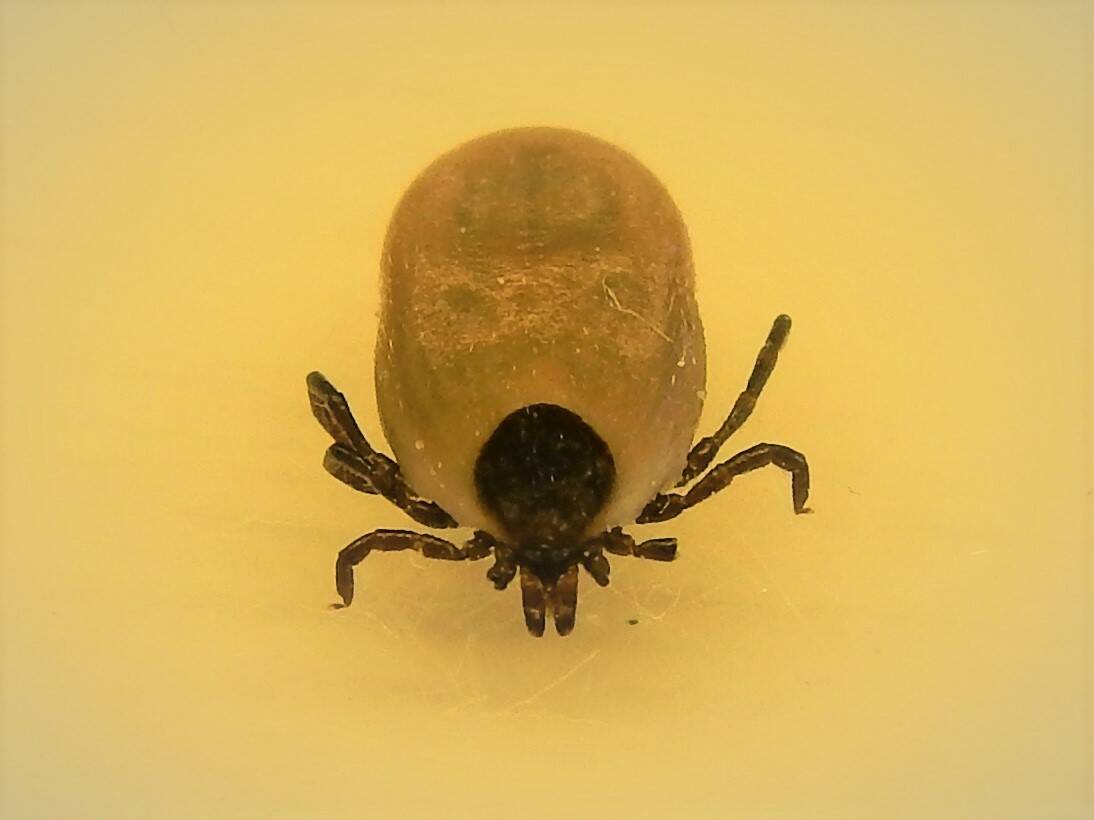Contributed by Russel Barsh, director of Kwiaht.
In May, a tick from San Juan Island tested positive for Borrelia burgdorferi, one of the bacteria that can cause Lyme Disease. While these test results remain to be confirmed by the Centers for Disease Control, they underscore the importance of taking ticks more seriously as a concern for people and wildlife in San Juan County.
This was not the first pathogen to be detected in ticks from the San Juan Islands. A dozen island ticks have been found infected with Babesia, a microscopic blood parasite that can cause Lyme-like symptoms. No human infections have been identified as yet in the islands, though this may reflect limited clinical testing for Borrelia or Babesia.
Ticks appear to be thriving and expanding their distribution from California to British Columbia. Several factors may be in play, including changing weather patterns that improve conditions for overwintering and questing ticks; human population growth and the associated disturbance of residential development that displaces ticks and their non-human hosts; and increasing human use of remaining “natural” areas such as parks and preserves.
Our native Western Blacklegged Tick, Ixodes pacificus, has a three-year, three-stage life-history (larva, nymph, adult) and will attach itself to a different host for the blood meals it requires to grow at each stage. Larvae and nymphs tend to be found in the leaf litter, while adults are most likely to climb grasses and shrubs and thus more likely to encounter and attach to human hikers and roaming pets. In the San Juan Islands, tick season is January to June with its peak in March and April, when islanders should be especially vigilant.
The island conservation-ecology laboratory Kwiaht has been studying local ticks since 2021, and initially relied on specimens collected by islanders from people or pets. Islanders have collected 350 ticks thus far, about half of which have been tested for eight major tick-borne pathogens at a cost of over $25,000, supported by the Orcas and San Juan community foundations, the Lopez Thrift Shop, and Kwiaht’s rainy-day cash reserves.
Although several East Coast tick species were found among these specimens, the great majority (95 percent) were native Western Blacklegged Ticks. Pathogens may be leap-frogging from long-infected tick populations in the Midwest and East Coast to tick populations in the Northwest. One possible avenue is the transportation of pets. A tick can continue to be attached to a dog, often undetected, for over 100 hours—long enough to drive from New York to Seattle.
But this requires that ticks share, and establish a “reservoir” in one or more animal populations in the islands. Animal hosts have been best studied in California, where lizards, rodents, and birds all play roles in the life cycles of native ticks. Hosts in the San Juan Islands remain unknown—but there are clues.
Ticks appear to be more abundant on Orcas Island than San Juan Island; and considerably less abundant on Lopez Island. This pattern suggests that island ticks depend on a wild host animal that is widespread on San Juan and Orcas, but rare or absent on Lopez. One native animal that fits that description is the Northern Alligator Lizard. Ticks have been found on Alligator Lizards in both the San Juan and Gulf Islands, and on Southern Alligator Lizards in California.
Different species of native and exotic squirrels are found on Orcas, Lopez and San Juan Islands, suggesting another possible explanation for the lopsided distribution of ticks in the county. Kwiaht researchers are “hunting” for Alligator Lizards this summer, and trapping live-trapping squirrels and other small mammals, in search of ticks to test for pathogens such as Babesia and Borrellia. Islanders can help by continuing to collect ticks from people, pets, and livestock, and mailing them to Kwiaht’s laboratory at P.O. Box 415, Lopez Island, WA 98261. Kwiaht will also be raising funds for tick-testing as part of this year’s San Juan Island Community Foundation County Fair Giving Campaign, Aug. 16-19.
Kwiaht director Russel Barsh will be at the SJICF booth at the County Fair on Friday afternoon, Aug. 18, from 1 to 2:30 p.m., if you have questions (or tick specimens to share).



